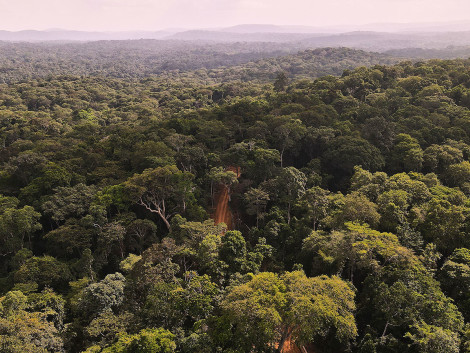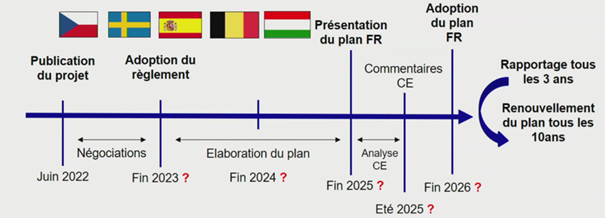

News | 28.10.2022
The ATIBT participated in the thematic day "Restoration of Forest Landscape" organized by the CST-Forêts on October 19 and coordinated by Bernard Mallet (CIRAD emeritus).

The purpose of this day was to come back to the issues and especially the operationality of this concept. It was structured around the following presentations:
What is forest landscape restoration?
Forest restoration operations have become more important since the 1990s in response to the combined challenges of forest cover loss and fragmentation, biodiversity erosion, land degradation and climate change (mitigation and adaptation).
Forest restoration practices, initially targeted on forest areas, and combining management, conservation and planting, are now part of a more "ecosystem and social" vision within the concept of "forest landscape restoration" (FLR) promoted in particular by IUCN and WWF. Around this concept, global and regional partnerships were structured in the first half of the 2000s, supported by political commitments (Bonn Challenge, 2011; AFR100, 2015). Mobilizing the conceptual framework of ecosystem services and the principles of integrated natural resource management, this approach considers restoration at the scale of landscapes in order to take into account ecological continuities (environmental effectiveness) and the various uses of land and resources by populations (socio-economic benefits).
Although the international community is becoming increasingly interested in this issue, with the proclamation in 2019 by the United Nations of the "United Nations Decade for Ecosystem Restoration" (2021-2030), its application at the country level and in the field still falls far short of the stated ambitions.
Although the restoration of forest landscapes is not a priori part of the National Strategy to Combat Imported Deforestation (SNDI), it is nevertheless a priority for many countries, particularly in the South, and is a subject of interest for supply chains operating in very heavily degraded landscapes.
What are the challenges of forest landscape restoration?
Daniel Vallauri (WWF) recalled that deforestation and forest degradation are the major challenges of forest landscape restoration. Indeed, deforestation has already caused the disappearance of 3 trillion trees or 240 million hectares over the last 25 years, mostly to convert these forests into agricultural land. The degradation of forests has contributed to the loss of ecological, social and economic qualities of forests. According to a WWF study (2014), 1.729 million ha are at high risk of degradation.
It is therefore essential to restore in order to preserve biodiversity, climate (carbon stock), but also for society. We all need forest resources: degraded lands are a cost to society because their value and their associated ecosystem services have disappeared.
All speakers recalled that it was essential to have a systemic approach to forest restoration by integrating social issues alongside biodiversity and economic issues of forests. Daniel Vallauri cited Besseau's (2018) definition of restoration: "Forest landscape restoration consists of reversing the degradation process of soils, agricultural areas, forests and watersheds, so that they regain their ecological functionality. It essentially aims to improve the productivity of landscapes and their ability to meet the diverse and evolving needs of society."
However, social values seem to be the "big losers" in the draft EU Regulation on ecosystem restoration. The general objective of this regulation is to cover at least 20% of the European Union's land and marine areas by 2030 with nature restoration measures and, by 2050, to extend these measures to all ecosystems that need to be preserved, prioritizing the restoration of environments with the greatest potential for carbon removal and storage or actively participating in preventing or reducing the impact of natural disasters such as floods.
Timetable of the EU Regulation
